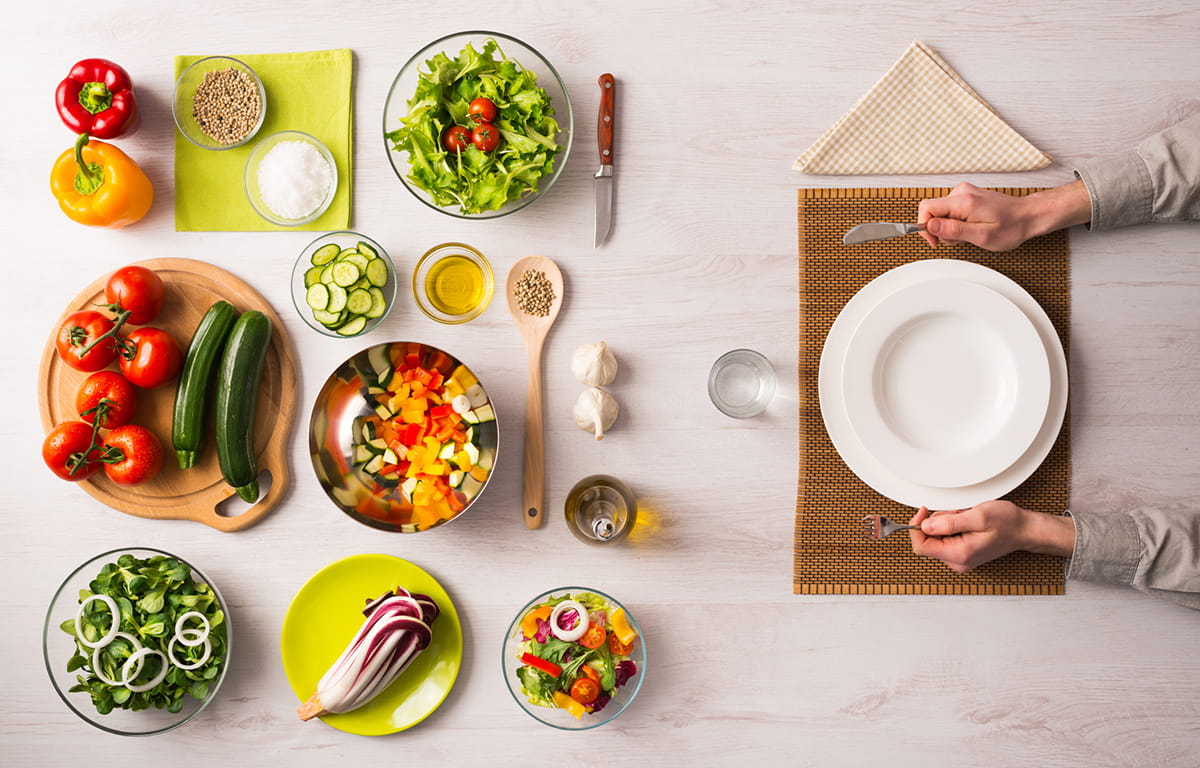Portion Size Versus Serving Size

Portion size and serving size are often used interchangeably, but they have a distinct and important difference. Portion size is the amount of food you choose to put on your plate and actually eat. Serving size is the amount of a specific food or drink that people typically consume. Serving sizes are set by the Food and Drug Administration (FDA) found at the top of the Nutrition Fact labels on packaged food and drink to help consumers make informed choices. The serving size is shown as a common household measure appropriate for that food.
Portion sizes of food prepared outside the home has increased significantly over the years and exceed federal guidance for dietary guidance and food labels. In addition, eating food out at a restaurant or ordering it for takeout/delivery has become increasingly popular. This contributes to the rise rates of overweight and obesity.
Because larger portion sizes often lead to an excess of calories eaten, consider what’s on your plate to help manage your intake.
So how did it get this way?
A century ago, there were about 3400 calories of food available for every U.S. citizen. Today, there are over 4000 calories available per person—an additional 600 calories, about 20% more available calories.
Understanding healthy portions can be challenging. Here’s why:
- Many of us don’t know what a healthy portion is.
- Restaurants offer extras like breads, chips and other appetizers that add extra calories, sodium and fat but lack any nutritional benefit.
- Some meals have portions that are enough for two or more people.
- Many convenience foods and drinks are priced lower but packaged in larger sizes to sell more.
Clearing up the confusion.
According to the U.S. Dietary Guidelines for Americans, here are a couple of important definitions:
- Portion is how much food you choose to eat at one time, whether in a restaurant, from a package or in your own kitchen. A portion is 100 percent under our control. Many foods that come as a single portion actually contain multiple servings.
- Serving Size is the amount of food listed on a product’s Nutrition Facts label. So all of the nutritional values you see on the label are for the serving size the manufacturer suggests on the package.
Once we understand the difference, it’s easier to determine how much to serve and easier to teach kids the difference between the two. Learn some suggested servings from each food groups you and your kids can eat at mealtime or between meals.
How can we eat and serve smaller portions?
- When cooking at home: Offer the proper “serving” to each member of the family, then put the extra food away. Save leftovers for another meal.
- When dining out: Skip the appetizers and split a large salad or main dish with a friend.
- When ordering takeout at home: Eat one slice of pizza instead of two and order a small instead of a medium to split among the family so the pieces are smaller.
- Watching movies at home or at the theatre: Don’t eat while watching TV or a movie or when you’re on the computer. It’s harder to control how much you’re eating if you don’t pay attention to what you’re putting in your mouth, and when. At the movies, share a box of popcorn, and avoid the free-refill tubs and skip the candy.
- At snack time: Never eat straight from the bag or box. Measure out snacks, including fruits and veggies, into appropriate portion sizes before giving them to your kids.
- All the time: Using a food diary can help you pay closer attention to what you're eating, how much and how often.
You may be surprised to learn these are serving sizes:
- 1 slice of whole grain bread
- 1/3 cup cooked rice
- 1/2 cup cooked pasta
- 1 small piece of fruit (super-large apples are 2+ servings)
- 1 wedge of melon
- 8 fluid oz. 100% fruit juice
- 1 cup non-fat or low-fat milk
- 2 oz. cheese (about the size of a domino)
- 2-3 oz. lean meat, skinless poultry or fish (this is about the size of a deck of cards)






